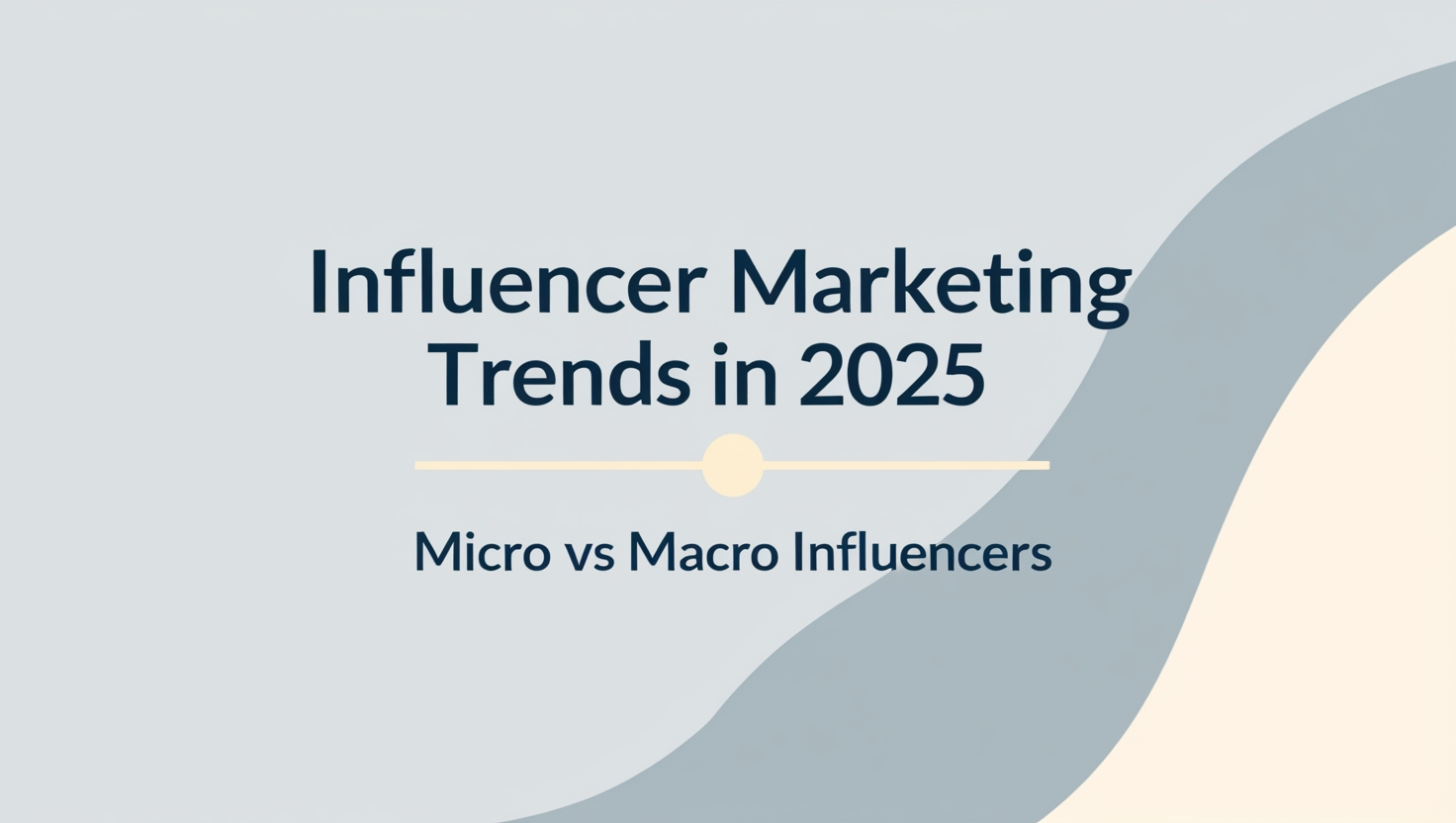
Influencer Marketing Trends: Micro vs Macro Influencers
Influencer marketing has been a game-changer for brands over the past decade, and as we move into the landscape continues to evolve. One of the most prominent shifts in this space is the ongoing debate between micro and macro influencers.
In this blog, we’ll dive deep into the Influencer Marketing Trends, exploring the benefits and challenges of working with both types of influencers and how brands can make the right choice for their campaigns.
Micro Influencers: The Rising Stars
Micro influencers, typically defined as individuals with between 1,000 and 100,000 followers, have become one of the hottest trends in influencer marketing. While their audience size is smaller than that of macro influencers, their influence is no less powerful.
Micro influencers are dominating the influencer marketing space due to their highly engaged audiences and niche markets. These influencers often focus on specific topics, making their followers more loyal and attentive to their recommendations. Their ability to cultivate trust with their audience has made them incredibly valuable for brands looking for authentic promotion.
Benefits of Working with Micro Influencers
- Higher Engagement Rates: Micro influencers tend to have higher
engagement rates than their macro counterparts. Their audiences are more likely to interact with their content, resulting in more meaningful conversations.
- Cost-Effectiveness: Brands can work with multiple micro
influencers for a fraction of the cost of a single macro influencer, enabling broader reach with a more targeted approach.
- Authenticity and Trust: Since micro influencers often have
closer relationships with their followers, their endorsements feel more authentic. This leads to higher trust and better conversion rates.
Macro Influencers: The Established Leaders
Macro influencers are individuals with a larger following, typically ranging from 100,000 to several million. They have long been the go-to for brands looking to make a big splash.
Despite the rise of micro influencers, macro influencers remain relevant due to their wide reach and established credibility. These influencers are often celebrities or industry experts with significant sway over public opinion. Macro influencers are particularly effective when brands want to launch large-scale campaigns and reach a broad audience.
Benefits of Collaborating with Macro Influencers
- Wider Reach: The primary benefit of macro influencers is their
ability to deliver a massive audience, making them ideal for brand awareness campaigns and product launches.
- Established Credibility: With a large following comes a level of
credibility and authority that can significantly enhance a brand’s reputation.
- Potential for Viral Content: Due to their vast reach,
collaborations with macro influencers have the potential to go viral, attracting massive attention for a brand.
Micro vs Macro: Key Differences
1. Engagement Rates
Micro influencers typically have higher engagement rates than macro influencers. Their smaller but more dedicated audience tends to engage more actively with their content, leading to more meaningful interactions.
2. Audience Size and Reach
Macro influencers offer a much larger reach, often in the millions. While this is advantageous for mass marketing, micro influencers offer more precise targeting, helping brands connect with niche markets.
3. Cost-Effectiveness
Micro influencers are generally more cost-effective, allowing brands to work with several influencers simultaneously for a more widespread impact. Macro influencers, while offering a larger reach, come at a premium cost.
4. Authenticity and Trust
Micro influencers are often perceived as more authentic, as they usually have a personal connection with their followers. Macro influencers, on the other hand, may be seen as more commercial, especially if they promote a wide range of products.
The Future of Influencer Marketing: Micro and Macro in Harmony
The future of influencer marketing doesn’t have to be a choice between micro or macro influencers, it’s about using both in a complementary way. Brands are increasingly recognizing the value of blending the micro vs macro influencer approach for maximum impact.
Successful brands are combining the strengths of both micro and macro influencers. For example, a brand might launch a product with a macro influencer to create buzz and generate wide-scale awareness. Then, they can turn to micro influencers to continue the conversation, provide reviews, and foster deeper, more authentic connections with potential customers.
Brands like Gymshark and Daniel Wellington have proven the power of using both micro and macro influencers. Gymshark relies heavily on micro influencers who actively promote its products within fitness communities, while Daniel Wellington uses macro influencers like celebrities and fashion icons to create broad awareness.
To build a successful influencer marketing strategy in 2025, brands should consider their goals, budget, and target audience. A combination of micro and macro influencers is often the best way to balance cost and reach while maintaining authenticity and engagement.
Final Verdict
As we move into, Influencer Marketing Trends continue to evolve, and the debate between micro and macro influencers will play a crucial role in shaping successful campaigns. While both types of influencers offer unique benefits.
The key to success lies in understanding your brand’s objectives and choosing the right influencer or combination of influencers to achieve your goals. By leveraging both micro and macro influencers, brands can create a more dynamic, engaging, and cost-effective influencer marketing strategy that resonates with a broader audience while maintaining authenticity.


Share Your Thoughts
Comments on “Influencer Marketing Trends: Micro vs Macro Influencers”